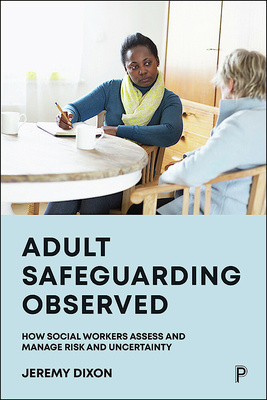In September this year, there was a spate of local press articles highlighting concern about the number of adult safeguarding concerns being registered with local authorities.
The Evesham Journal reported that thousands of safeguarding concerns were ‘being raised about vulnerable adults in Worcester’, while Stourbridge News reported on a ‘raft of safeguarding concerns about Dudley vulnerable adults’. Similar articles appeared in the areas of Barnsley, Birmingham, Nottinghamshire, Sheffield, Westminster and Wigan.
The articles reported new information from the Safeguarding Adults Collection in England between April 2022 and March 2023. These findings revealed that approximately 587,965 concerns of abuse against adults had been raised, which was an increase of nine per cent on the previous year. While the press reports raised concerns about the rising number of safeguarding concerns, this is not a new problem. The information contained in the Safeguarding Adults Collection shows that the number of safeguarding concerns reported to local authorities totalled 364,605 in the 12-month reporting period for 2016–17, rising most years, to 587,965 for the 12-month period between 2022 and 2023.
So, how do social workers involved in adult safeguarding explain the rise in safeguarding concerns? In my recent book, Adult Safeguarding Observed, I report on observations and interviews I conducted with social workers engaged in adult safeguarding in three local authorities, to find out what they thought about and managed adult safeguarding risks. Social workers identified several reasons for the rise in adult safeguarding concerns. First, social workers believed that the numbers of concerns expressed was related to the introduction of the Care Act 2014. This Act provided a legal duty for safeguarding adults at risk of abuse and neglect for the first time. Mike, a senior practitioner in an adult safeguarding team said:
“There has been an increase in the number of referrals. I think the Care Act has highlighted that [legal] duty to care providers, but the local authority has always done that anyway, has always wanted referrals to come in.”
Similarly, other social workers argued that rising levels of concerns should be welcomed, because they reflected a growing awareness of adult abuse and neglect, which had been absent before the introduction of the Care Act 2014.
Second, social workers highlighted that concerns about adult safeguarding were going up due to some health and social care professionals making ‘inappropriate referrals’. Social workers believed that such referrals came about for a variety of reasons. Karen, a senior practitioner, said:
“Well, I’d say that our health colleagues perhaps mix up concerns they have about cases with what we would call safeguarding issues. I mean of course, you know, they flag up cases where social work input might be useful or housing might be useful, but it isn’t necessarily safeguarding.”
In other words, Karen and other social workers argued that some concerns were raised due to misunderstandings of the safeguarding criteria within the Care Act 2014. In other cases, social workers believed that safeguarding concerns were driven by defensive practice by practitioners, in trying to raise a concern to protect themselves from being blamed in the future. In addition, several social workers believed that health professionals were cynically trying to game the system, by labelling a case as a safeguarding concern to jump the queue.
Third, social workers believed that the levels of safeguarding concerns were affected by government austerity policies, which had led to sharp reductions in local authority spending. These reductions in services were seen as leading to a rise in adult safeguarding services. For example, in one local authority I observed, social work managers had received notice that a care agency, which I have named Complecare, might go bust. As the agency struggled to maintain its service, the local authority received an influx of referrals. These included concerns of service users not receiving scheduled medication, not being fed, and being left wearing incontinence pads for extended periods. Victoria, who was a senior practitioner in this local authority highlighted that “…things are a lot less stable, so you know this kind of thing with Complecare, they might go under, and we will have to try and find care for 150 people”. She went on to say that the knock-on effect of other services being cut led to social services being seen as the ‘last stop’, leading to a rise in safeguarding concerns.
So, should rising levels of safeguarding concerns always be seen as a bad thing? My research found that many social workers believed that adult abuse and neglect had a history of remaining hidden. For this reason, some social workers and local authorities actively encouraged health and social care professionals to raise safeguarding concerns. However, the impact of funding cuts complicates this picture and leads to safeguarding adults’ concerns being raised due to the welfare net having bigger and bigger holes. This indicates that the reporting of safeguarding concerns should be encouraged to protect adults from abuse, but that this system is reliant on an adequate amount of funding and can only operate effectively if the health and social care system does not neglect the needs of the population.
Jeremy Dixon is a Senior Lecturer of Social Work at the University of Bath.
 Adult Safeguarding Observed by Jeremy Dixon, is available here for £14.99 on Bristol University Press.
Adult Safeguarding Observed by Jeremy Dixon, is available here for £14.99 on Bristol University Press.
Chapters 1, 3 and 5 are available Open Access via Bristol University Press Digital.
Bristol University Press/Policy Press newsletter subscribers receive a 25% discount – sign up here.
Follow Transforming Society so we can let you know when new articles publish.
The views and opinions expressed on this blog site are solely those of the original blog post authors and other contributors. These views and opinions do not necessarily represent those of the Bristol University Press and/or any/all contributors to this site.
Image credit: kilarov zaneitvia via Unsplash


